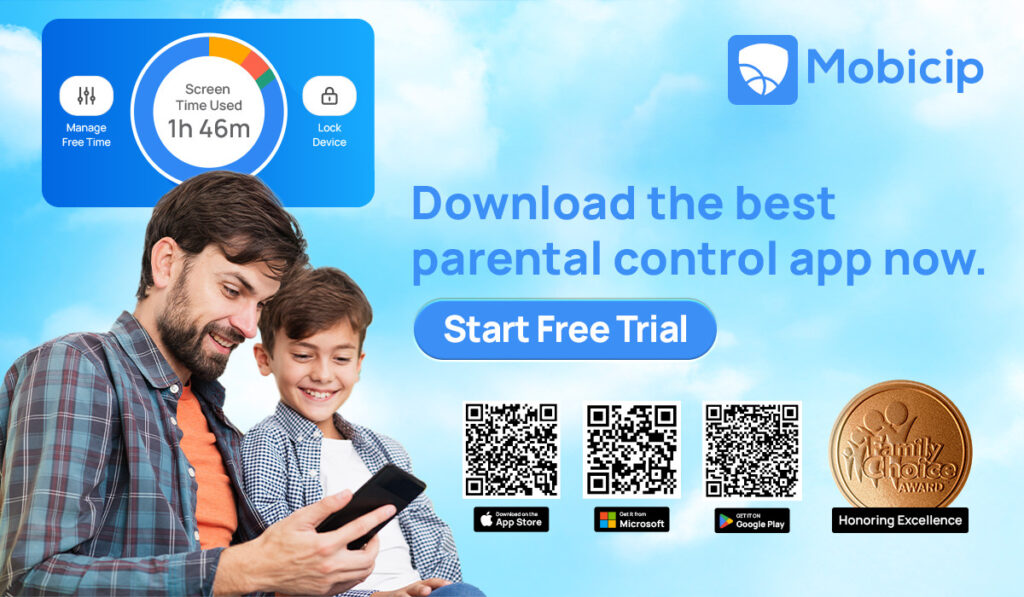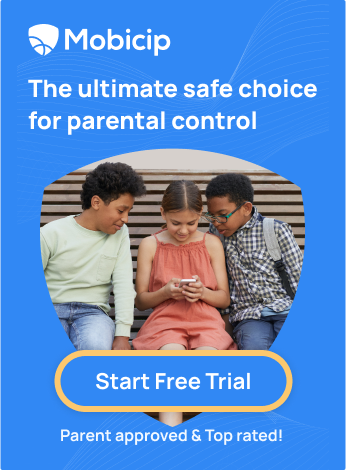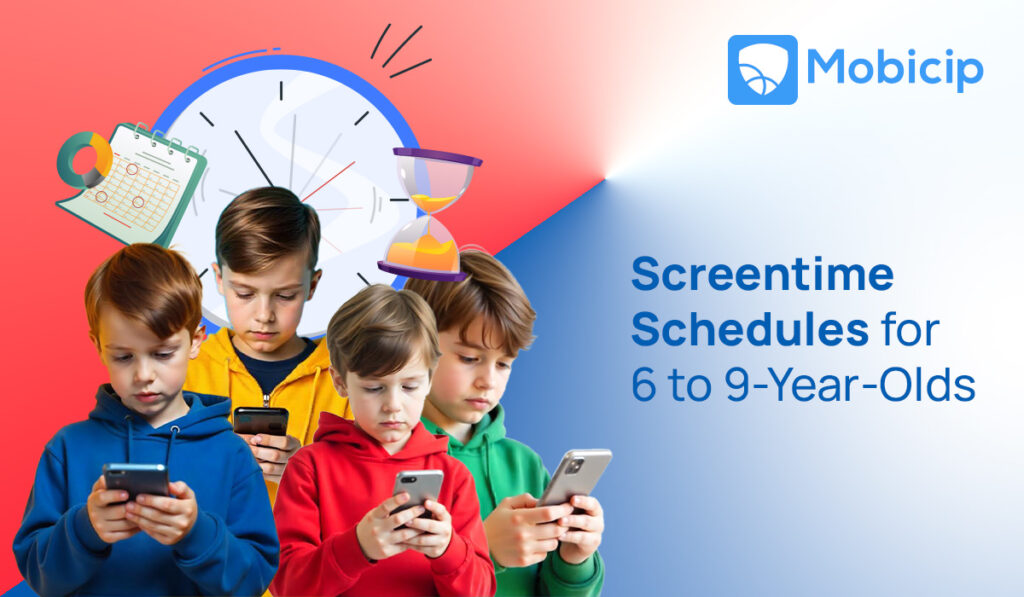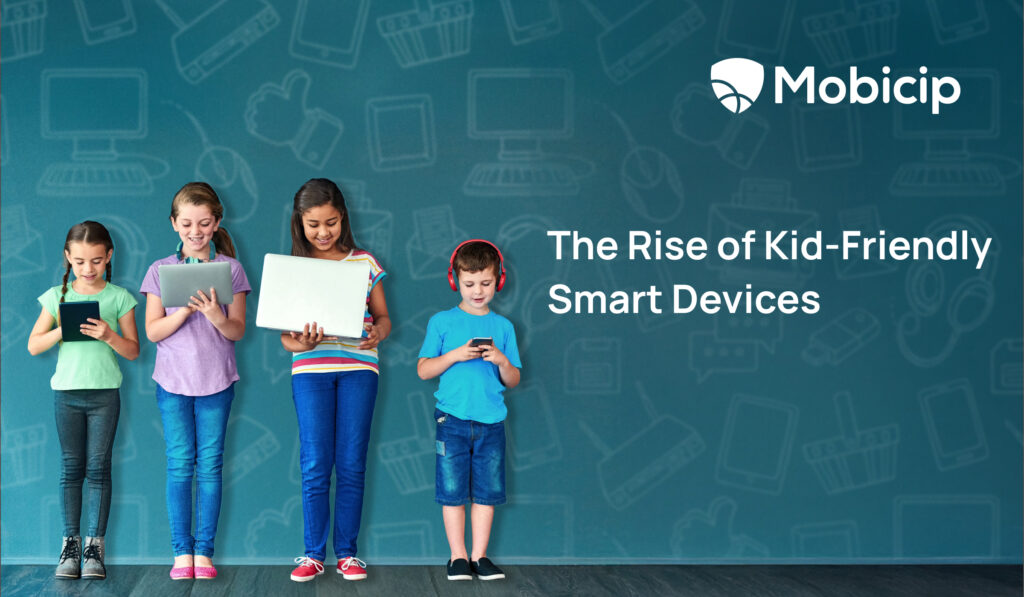How to Choose the Right Parental Control App: 5 Key Features to Look For
A parental control app is a digital tool like Mobicip that helps parents monitor, manage, and guide their children’s online activities across smartphones, tablets, and computers. These apps can perform a range of functions from blocking inappropriate content and tracking screen time to alerting parents about potentially dangerous interactions. With many options on the market, it’s important to know what features really matter—and which apps offer the best balance between safety and ease of use.

Parental control apps are not just for tech-savvy parents or those with older teens. Anyone raising a child who uses the internet—from toddlers watching YouTube to preteens gaming online or teens on social media—can benefit from the protection and oversight parental control apps offer. In fact, they might even help parents themselves—because let’s be honest, sometimes the real screen-time offender is the grown-up scrolling Instagram while phubbing their gadget-wielding children on the opposite couch.
In this article, we’ll explore why parental control apps are a must-have for today’s families and break down the five key features you should look for when choosing one. Whether you’re just getting started with digital parenting or want to level up your current setup, this guide will help you make the right choice. We’ll also take a closer look at Mobicip—an app trusted by families around the world for its powerful features and user-friendly design.
Why a Parental Control App Matters More Than Ever
According to UNICEF, one in three internet users worldwide is a child, and children are going online at younger ages and spending more time connected than ever before. Digital technologies offer powerful tools for learning, creativity, and connection. But they also expose children to serious risks that can impact their safety, health, and development.
The threats are real and growing, affecting children across age groups and platforms. Here are some of the most pressing concerns:
Cyberbullying and Online Exploitation
Social media platforms, messaging apps, and multiplayer games are meant to connect people. However, they can also be breeding grounds for toxic behavior. Children may be subjected to mean comments, exclusion, rumors, or public shaming, all of which fall under the umbrella of cyberbullying. The emotional damage can be long-lasting, especially when the bullying follows them home via their devices. Even more concerning is the risk of online exploitation. Predators can use fake profiles and grooming tactics to build trust with children and manipulate them into sharing personal information or images. The anonymity of the internet often gives these individuals the cover they need to operate undetected. According to the United Nations, a third of young people report being cyberbullied, with 1 in 5 skipping school because of it.
Physical Health Issues
Too much screen time has been linked to poor posture and eye strain. Blue light from screens can also interfere with natural sleep cycles, making it harder for children to fall and stay asleep. On top of that, excessive screen use often replaces physical play and outdoor activities, contributing to sedentary behavior and even childhood obesity. Building healthy tech habits early is essential to long-term well-being.
Mental Health Challenges
Online comparisons, social media pressure, and exposure to distressing content can contribute to anxiety, depression, and low self-worth, especially among teens. Exposure to distressing or violent content can also lead to emotional disturbances, particularly in sensitive or younger users. For teens already navigating a complex emotional landscape, the digital world can become a source of intense stress rather than a space for expression.
Social Development Problems
Too much screen time can hinder a child’s ability to form meaningful relationships in the real world. Constant engagement with devices can limit face-to-face interaction, making it harder for children to develop empathy, emotional intelligence and communication skills, and real-world relationships may suffer. They may find it harder to engage meaningfully with peers and family members.
Exposure to Inappropriate Content
From violent games and graphic videos to sexually explicit material, the internet offers no shortage of age-inappropriate content. Some platforms don’t effectively screen content before it goes live, increasing the chances of exposure. The psychological impact of such exposure can vary, but repeated encounters with disturbing content may lead to desensitization, fear, confusion, or mimicry. Parental controls and filters are crucial for creating digital spaces that are age-appropriate and safe.
Risky Online Behavior
Many children don’t fully grasp the consequences of their actions online. The TV show Adolescence may be scripted, but the scenarios hit uncomfortably close to home for many families. They may share personal photos, reveal their location, or accept friend requests from strangers without realizing the risks. Clicking on suspicious links can also expose devices to malware or phishing attempts. In recent years, viral online challenges have encouraged risky behaviors, some of which have led to real-world injuries or worse. Without guidance and monitoring, children may fall into dangerous patterns simply because they don’t yet have the maturity to recognize threats.
These are just the tip of the iceberg. Other concerns include online addiction, gaming-related aggression, academic distraction, and even financial scams targeting kids.
Parental control apps can help families minimize the risks of online indulgence. They act as digital seatbelts, allowing kids to explore the online world safely while giving parents visibility and control.
Five Key Features to Look For in a Parental Control App
According to Dataintelo, the global parental control software market is projected to grow from approximately $1.7 billion in 2023 to an estimated $4.5 billion by 2032. This rapid growth reflects rising concerns over children’s online safety and the ever-expanding reach of the internet and smart devices. As digital content becomes more accessible—and often more concerning—parents are seeking effective tools to monitor, manage, and protect their children’s online experience.
With so many apps and platforms available, choosing the right solution can be overwhelming. The ideal app depends on your family’s unique needs—whether you’re raising toddlers, teens, or both. Factors like family values, screen-time policies, and budget all matter. Still, some key features are essential for any good parental control app.
Real-Time Activity Monitoring in the Parental Control App
- Allows you to see your child’s digital activity as it happens—app usage, web searches, and more
- Get alerts for concerning messages on SMS, WhatsApp, Instagram, and more
- Enables quick intervention if something concerning appears
- Reduces the chance of dangerous content slipping through unnoticed
- Helps start timely conversations based on real behavior
- Some apps even offer real-time notifications for flagged activity
Screen Time Management
- Set daily screen time limits to prevent overuse
- Schedule breaks or tech-free times (like bedtime or study hours)
- Introduce “digital curfews” to promote better sleep
- Support healthier routines and reduce digital fatigue
- Give children structure and a better sense of balance
Web, App, and Communications Monitoring
- Block access to age-inappropriate websites and apps
- Choose from pre-set categories or create custom filters
- Prevent exposure to adult content, violence, or gambling
- Monitor for threats like cyberbullying, grooming, or explicit content
- Use AI-based systems to detect risky behavior without reading every message
- Maintain a balance between oversight and trust. Some apps flag only dangerous keywords or content, respecting your child’s privacy.
- Tailor restrictions to match your child’s age and maturity
- Easily adjust settings as your child grows
Location Tracking in the Parental Control App
- Track your child’s location in real time via GPS
- Set geofences (like school or home) and get alerts when boundaries are crossed
- Know when your child arrives safely at school or leaves a designated area
- Useful for coordinating pickups or emergencies
- Offers both security and peace of mind
Ease of Use, Cross-Platform Support, and Customer Help
- User-friendly interface that doesn’t require tech expertise
- Works across devices—Android, iOS, Windows, and macOS
- Cloud-based dashboards to manage controls from anywhere
- Transparent pricing with no hidden costs
- Responsive customer support for troubleshooting and setup help
Choosing a parental control app doesn’t have to be overwhelming. Just focus on the features that truly support your family’s needs and values.
Mobicip as a Parental Control App of Choice
Mobicip is a popular and highly rated parental control app that helps families manage screen time, filter content, and stay informed about their children’s digital lives. The app works seamlessly across iOS, Android, Windows, macOS, Kindle, and Chromebook devices. It combines ease of use with a rich feature set, making it one of the best parental control solutions available today.
Here are some of Mobicip’s standout features:
- Screen Time Management: Set daily limits, schedule device-free times (like bedtime or homework hours), and enforce healthy usage habits.
- Content Filtering: Block access to inappropriate websites and apps using customizable filters based on your child’s age and maturity.
- App & Website Blocking: Instantly block or allow specific apps and websites, giving you full control over what your child can access.
- Real-Time Location Tracking: See where your child is at any time and get alerts when they enter or leave pre-set areas using geofencing.
- Activity Reports: View detailed reports of your child’s browsing history, video usage, and app activity across devices.
- Social Media Monitoring: Get insights into your child’s activity on platforms like YouTube, Instagram, and TikTok (depending on device permissions).
- Family Dashboard: Manage all your controls from one central dashboard that’s accessible from anywhere.
- Cross-Platform Compatibility: Works across multiple device types, ideal for families with a mix of phones, tablets, and computers.
- Flexible User Profiles: Customize settings for each child based on their age, routine, and level of independence.
- Encrypted and Secure: Prioritizes user privacy with secure, encrypted data handling and compliance with global safety standards.
Mobicip’s all-in-one approach makes it a smart, reliable choice for parents looking to raise safe and responsible digital citizens.

Conclusion
Digital parenting is no longer just about setting ground rules. It is about staying a step ahead in a world where technology evolves faster than childhood. Parental control apps empower families to create healthier screen habits, encourage open conversations, and build trust in the process. The goal isn’t to hover, but to guide. When used wisely, these tools can help children develop digital resilience and make better choices online. It’s not about surveillance—it’s about support. Because in the end, the best parental control isn’t just in the app, but in the connection we maintain with our children.





